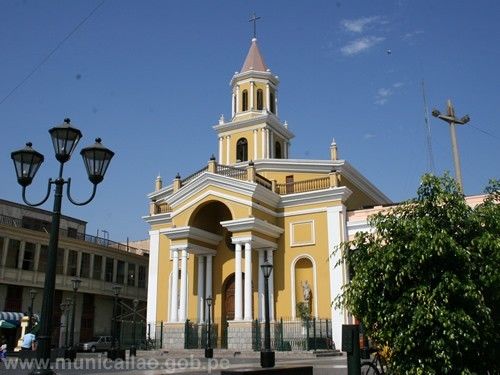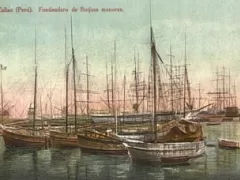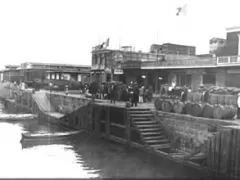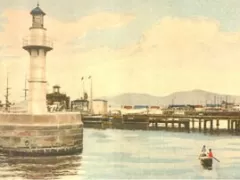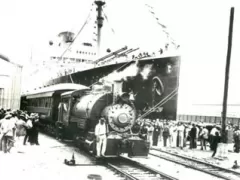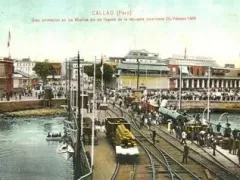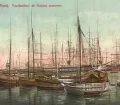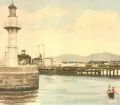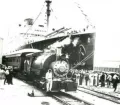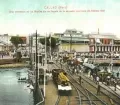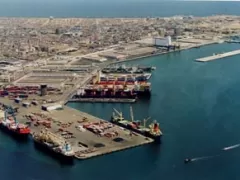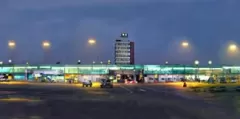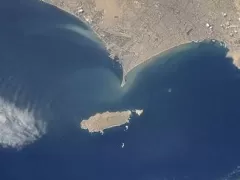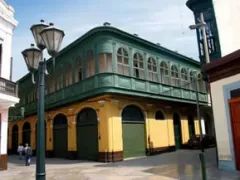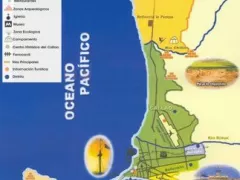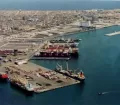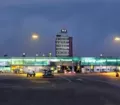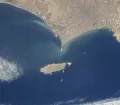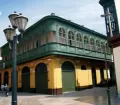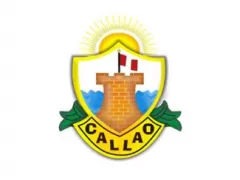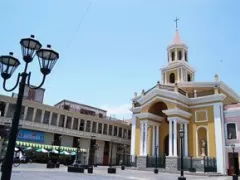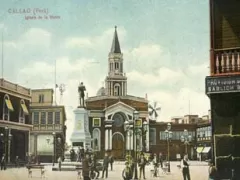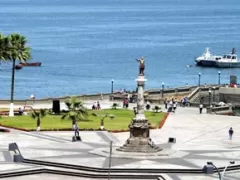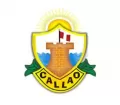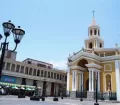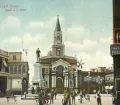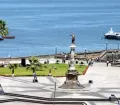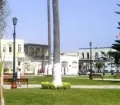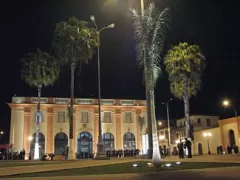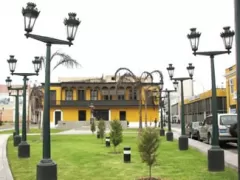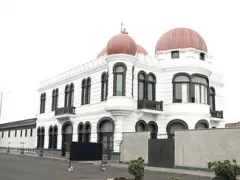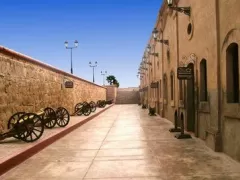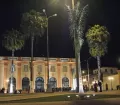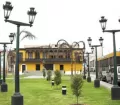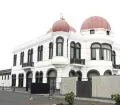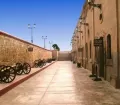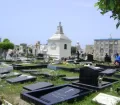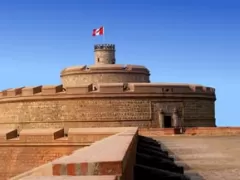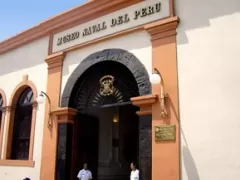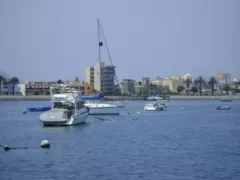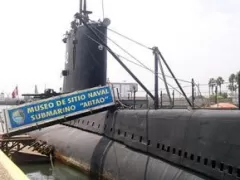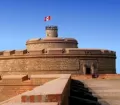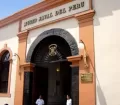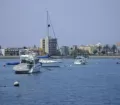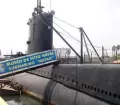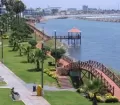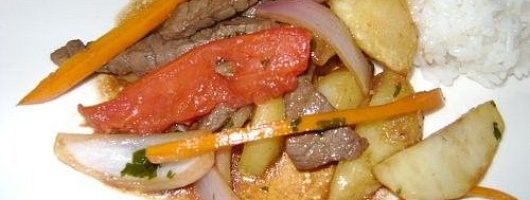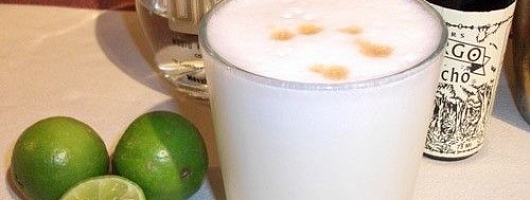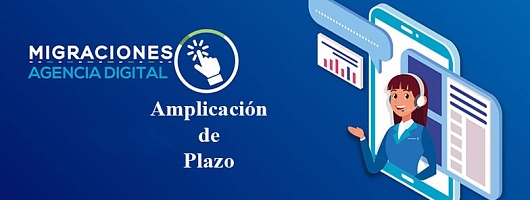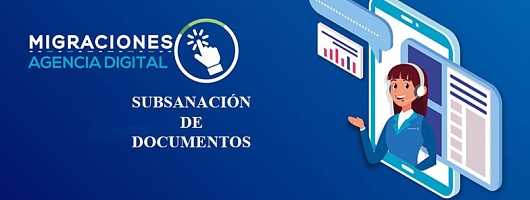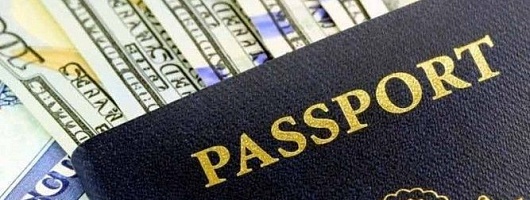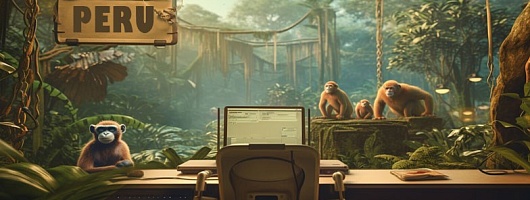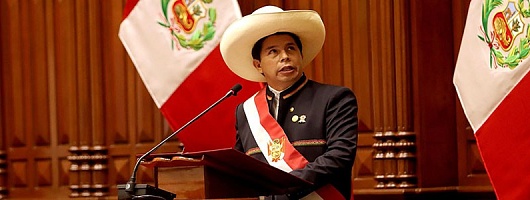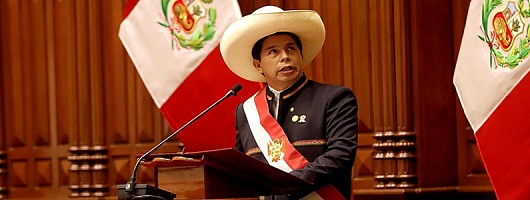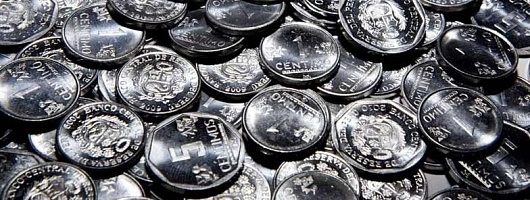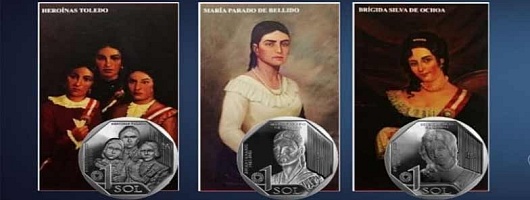Callao is one of the six districts that make up the Constitutional Province of Callao. So to make it confusing for everyone Callao is not only the name for the old downtown area, but as well for the district and the whole region around it. The district of Callao stretches along the coast and is located to the west of Lima’s city center.
In prehistoric times the area we know today as Callao was transmigrated by hunters and gatherers. Due to the proximity to the Pacific Ocean and the River Rimac, these people began to fish and soon settled down. Archaeological findings prove that next to fishing, agricultural activities developed quickly and amazing cultures arose in this area.
Brief History of Callao
When the Spanish conqueror Francisco Pizarro was looking for a suitable place to built a new capital in the Americas today know as Lima he found this place on the fertile grounds between the Andes and the Pacific Ocean. One of the reasons he chose this area for his new city was the proximity to the natural harbour of Callao. During the colonial period Callao was the principal port for Spanish commerce in the Pacific. Spanish trade regulations made sure that goods from all over the Spanish Empire in South America were shipped via the harbour of Callao. This meant that literally all valuable goods like gold and silver from the Peruvian mines and other goods from Peru, Bolivia and Argentina were brought mostly by mule to Callao, to be shipped to Panama, carried overland and then transported by ship to Spain. Products and people from Europe did the way vice versa. Callao was blossoming and became Lima's gateway to the world. It was a place where goods from South America and Europe were handled and immigrants (especially Italian) found a new place to live.
The wealth passing through the port of Callao made it an ideal target for attacks of pirates. In 1579 the famous and feared Francis Drake raided Callao to seize valuables and merchandise. The Dutch pirate Joris van Spielbergen and Admiral Clerk, better known as Jacques L'Hermite, attacked the port in 1615 and 1624.
Callao also had to put up with a severe natural disaster. On the 28th of October 1746 a strong earthquake, followed by a huge tidal wave hit Callao and destroyed the entire port. According to the chronicles of this time, only about 200 of the 5000 inhabitants of Callao survived.
Due to the importance for the Spanish trade the Viceroy José Manso de Velasco ordered to rebuild Callao even more impressive and to fortify the town. The work for building a new fortress began in 1747. Finally in 1770, the Castillo del Real Felipe (the biggest and most impressive of all fortresses the Spanish crown built overseas) was completed. Still overlooking the bay of Callao the fortress today houses a great museum for military history.
After Peru's independence Callao played a vital role for the development and economy of Peru. Understanding the significance of the port of Callao, Marshall Andrés de Santa Cruz signed the creation of the Callao Littoral Province on the 20th of August 1836, which gave the town total political autonomy. Many immigrants from Asia and Europe, especially Chinese and Italians, arrived in Callao. In 1851 the first railroad of South America was inaugurated, connecting Callao with Lima.
A few years later, on the 22nd of April 1857 Callao became a Constitutional Province. By the end of the 19th century the exploitation of guano (guano = seabird droppings - an effective fertilizer and gunpowder ingredient) on the islands off the coast initiated a boom. After the recession from the War of the Pacific this initiated a new epoch of decent wealth and prosperity for Callao and Lima. This fast increase of guano exports brought sailors from around the world to Callao who wanted to have their share of the cake. Quite a few stayed and Callao like Lima became a multicultural community.
Since Colonial times Callao is Lima's and Peru's gateway to the world. And therefore it is only appropriate that the capital's international airport is located here as well. Named after the famous Peruvian aviator Jorge Chávez, today the airport connects Lima with 16 national and 29 international destinations. But Callao was and probably always will be an independent city with inhabitants being proud to be Chalacos.
Facts & Figures about Callao
The Constitutional Province of Callao forms together with the Province of Lima the Lima-Callao Metropolitan Area. But Callao isn't officially part of Lima. As mentioned before it is economical, social, cultural, geographical and historical linked to the capital Lima. Nevertheless Callao is a separate administrative province, comprising of Callao town itself, the neighbouring communities of Bellavista, Carmen de la Legua, La Perla, La Punta, Ventanilla and the Islands of San Lorenzo, El Frontón and Cavinzas.
The city of Callao was already founded in 1537, just two years after Lima, and soon became the main port for the Spanish conquers in the Americas. The Constitutional Province of Callao was created on the 22nd of April 1857, which had politically autonomy. Bellavista was officially established as district of the Callao Province on the 6th of October 1915, Carmen de la Legua on the 4th of December 1964, La Perla on the 21th of October 1964, La Punta on the 6th of October 1915 and Ventanilla on the 28th of January 1969.
Places to visit & attractions in Callao
Fortress Real Felipe
Callao's main attraction is the Fortress Real Felipe. Built over 250 years ago to defend the Peruvian coast and the harbour of Callao from attacks of pirates, it is the biggest and most impressive of all fortresses the Spanish crown erected overseas. Inside its walls, hallways and towers a piece of Peruvian history has survived. Since 1984 the fortress houses the museum of the Peruvian army, the "Museo Historico Militar Real Felipe". Take a guided tour and discover another part of the Peruvian past (it takes about 2½ hours).
On the 3rd of July 2012 the Peruvian Central Reserve Bank released a new S/. 1 coin featuring the Fortress Real Felipe. Find more info on this special coin and its history in our article about the "Wealth and Pride Series".
The Naval Museum – Museo Naval y Maritimo del Peru
Located just a few blocks from the Fortress Real Felipe is the Peruvian Naval Museum. The fascinating naval and maritime history of Peru is shown with archaeological testimonies, personal objects of war heroes, ship models, instruments for navigation, photos, paintings, jewelry, sculptures and documents. In the library you will find all kinds of books related to the maritime history. The museum offers an interesting "package": The tour through the museum (1½h to 2h) and a great 30 min. boat trip around Callao harbour. Have fun!
Boat Tour to Callao's Islands
(Piers of La Punta and Callao)
One of the highlights of a visit to Callao is a boat trip to the islands offshore. Discover the "Mysterious Island" of San Lorenzo, The Island of Death "El Frontón" and the Palomino Islands with their unique wildlife. Boats depart daily in the morning from the piers of La Punta and Callao. You need to book a tour in advance at one of the numerous travel agencies or at the tourist booth of the Municipality of Callao. Depending on the tour you choose, the trips takes around 4 hours.
Plaza Francisco Bolognesi
(Av. Saenz Peña, Block 5, Callao)
The Plaza Bolognesi is considered to be the main square in Callao, even if it seems that this honour belongs to Plaza Grau with its historical fortress, the Naval Museum nearby and its closeness to the old downtown Callao. But on the Plaza Bolognesi most for the community important ceremonies and events takes place. In honour of the hero of the famous Battle of Arica, Francisco Bolognesi, this nice square place was named after him and a statue of him built in the middle.
Plaza Jose Galvez
(Off Av. Saenz Peña, Block 2 towards the historic city center, Callao)
This square is dedicated to Colonel Jose Galvez, hero of the naval battle of the 2nd of May 1866, who died defending Callao against the Spaniards. The historical houses surrounding the square give it its special charm. Many of them date back to the end of Colonial and Republican times with clearly visible English influence. The old mansions were declared as Historical Monuments by the National Cultural Institute of Peru (INC).


